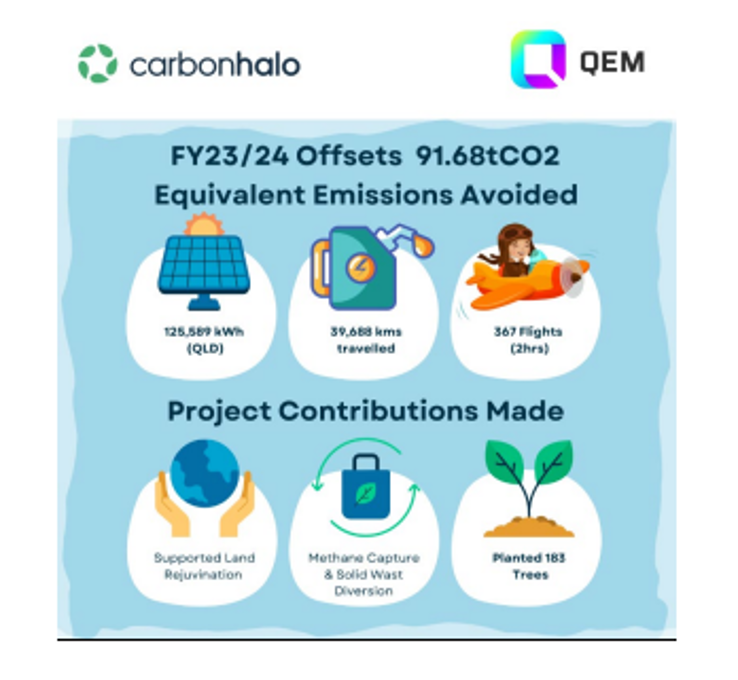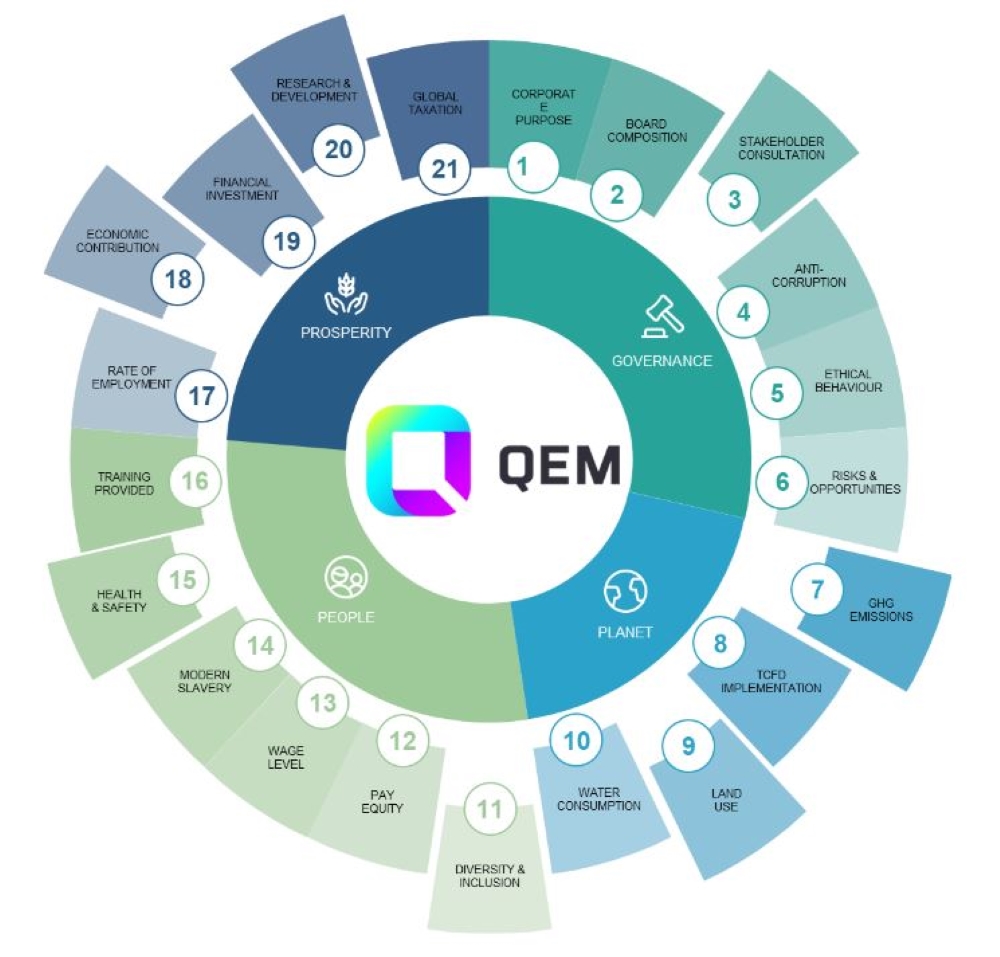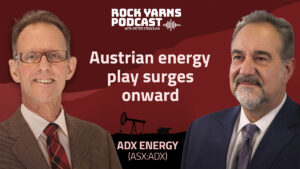QEM drives world-leading ESG strategy for Julia Creek

ESG targets are a driving force for QEM’s business practices. Pic: Getty Images.
- QEM is driving groundbreaking sustainability models for its business practices
- ESG progress aligned with World Economic Forum’s 21 core metrics
- Julia Creek is one of the largest vanadium deposits in the world
Special Report: Critical minerals developer QEM has completed its first year of offsetting unavoidable greenhouse gas emissions at its world-class Julia Creek vanadium project in Queensland, demonstrating the ESG credentials needed to get a major battery metals project into production.
QEM (ASX:QEM) has completed a second annual inventory assessment of its greenhouse gas emissions with Carbonhalo, following on from an inaugural assessment completed for FY22.
The third-party verified assessment has demonstrated QEM’s commitment to transparent greenhouse gas reporting and its ethical obligations, with a follow-up assessment for the 2023 financial year showing a substantial emissions reduction from 146.8t of CO2 equivalent to 116.15t CO2e.
It is now engaged in the carbon market to reduce its global footprint further, acquiring Australian carbon credit units and offset sources from international VERAA/UNFCC projects.
They include land rejuvenation, methane capture and waste diversion and tree planting projects offsetting 91.68t CO2e, the equivalent of 125,589KWh of Queensland electricity, 39,688km of car travel or 367 two-hour flights.

ESG forward strategy
The news comes as QEM continues its market-leading approach to ESG reporting, delivering its annual Environmental Social Governance Disclosure Report with Socialsuite to the ASX on Monday.
“Our sustainability goals are running in tandem with the development of the Julia Creek project, assisted by our quarterly ESG reporting,” QEM MD Gavin Loyden says.
“We are progressively improving the company’s ESG integration and data quality.
“We’ve learnt a lot since early 2022 when we began reporting on the World Economic Forum’s 21 core metrics.
“Our key goal remains consistent over time; to allow investors and other stakeholders to see how QEM’s ESG progress is aligned to the company’s goal to help meet increasing global demand for vanadium for safe, long-duration energy storage systems.”
Global scale targets
That focus is being implemented at the Julia Creek vanadium and oil shale project – a world-class 461Mt at 0.29% V2O5 JORC indicated resource with an in-situ 6.3Mbbl 1C SPE-PRMS oil resource contained within the same orebody.
It’s one of the world’s largest deposits of the metal that forms the key component of the electrolyte used in vanadium flow batteries.
The company is also working with the University of Queensland on a circular economy project, successfully recycling vanadium pentoxide from industrial waste.
QEM’s ESG targets come with disclosures on the 21-core metrics set by the World Economic Forum (WEF) and have been consistently delivered in each of the company’s quarterlies to-date.

The next evaluation of QEM’s emissions for FY24 will be undertaken again by Carbonhalo.
Meanwhile it is also making strides with other environmental and social measures, undertaking water consumption monitoring with tailings storage and dewatering design experts ATC Williams, as well as undertaking stakeholder engagement.
That included a materiality assessment sent to nearly 100 stakeholders in the third quarter of FY24. Returned by around 25% of the stakeholders who received it, the assessment has placed a microscope on key areas QEM says it also sees as vital, including good health and wellbeing, affordable and clean energy, reduced inequalities, sustainable cities and communities, economic growth and life on land.
QEM has also invested heavily in the community around Julia Creek sponsoring the town’s rugby and netball teams with a focus on youth and women’s development, education and sport, a number of community events and becoming a bronze partner of the Women in Sustainable Energy and Resources group.
The company sponsored its International Women’s Day Event in Brisbane in March.
This article was developed in collaboration with QEM, a Stockhead advertiser at the time of publishing.
This article does not constitute financial product advice. You should consider obtaining independent advice before making any financial decisions.
Related Topics

UNLOCK INSIGHTS
Discover the untold stories of emerging ASX stocks.
Daily news and expert analysis, it's free to subscribe.
By proceeding, you confirm you understand that we handle personal information in accordance with our Privacy Policy.








